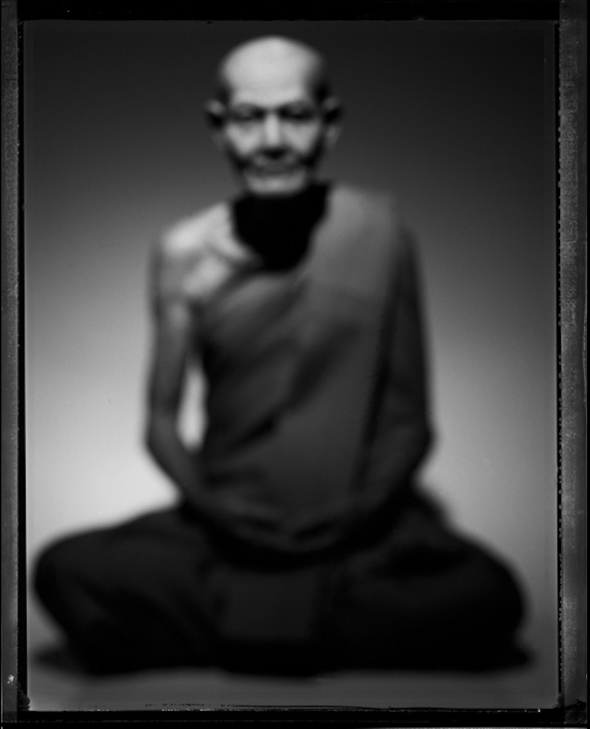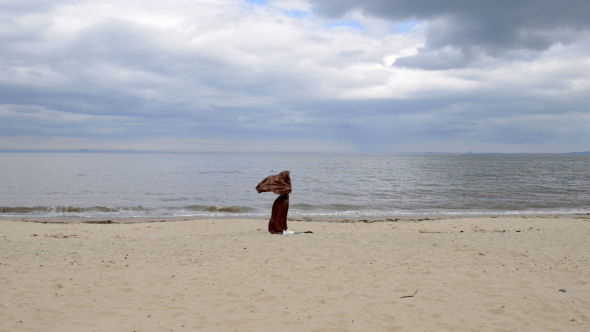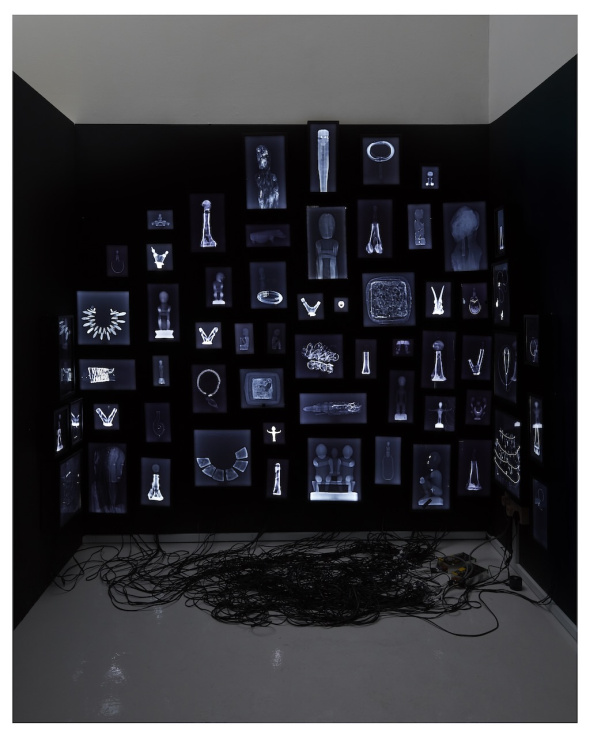Southeast Asia is a deeply spiritual region, with Hinduism and Buddhism exerting a strong influence on early civilisations in what is now Indonesia, Cambodia, Thailand, Myanmar, and Vietnam. Islam later took root across the Malay Peninsula, and the islands of Indonesia and Southern Philippines. Christianity arrived during European colonisation, with the Philippines embracing Catholicism as its main religion. Throughout the region, however, there remain traces of animist beliefs and practices that pre-date the arrival of these outside influences. Even today, spirituality remains an important part of daily life across Southeast Asia and artists from the region engage with its deep connections to national identity, tradition, and local culture, but they also reveal the contradictions and complications that arise when these values clash with the growing influence of secularisation and globalisation on contemporary societies.
Main image: Preah Kunlong (The Way of the Spirit), 2016-2017. (c) Khvay Samnang. Image courtesy of the Artist.
Spiritual lands
Southeast Asia is a deeply spiritual region, with Hinduism and Buddhism exerting a strong influence on early civilisations in what is now Indonesia, Cambodia, Thailand, Myanmar, and Vietnam. Islam later took root across the Malay Peninsula, and the islands of Indonesia and Southern Philippines. Christianity arrived during European colonisation, with the Philippines embracing Catholicism as its main religion. Throughout the region, however, there remain traces of animist beliefs and practices that pre-date the arrival of these outside influences. Even today, spirituality remains an important part of daily life across Southeast Asia and artists from the region engage with its deep connections to national identity, tradition, and local culture, but they also reveal the contradictions and complications that arise when these values clash with the growing influence of secularisation and globalisation on contemporary societies.
Norberto Roldan's artistic practice involves the re-appropriation of found objects, texts, and images to address socio-political and cultural concerns. In Faith in Sorcery | Sorcery in Faith #13-14, 2009, he engages with the syncretic nature of folk Catholicism in the Philippines. Roldan juxtaposes animist talismans, known as anting anting, with Catholic devotional prayer cards known as stampita, to bring attention to the interchangeability of these objects of protection for Filipino Catholics, though they derive from different belief systems.
A similar critique of Thai Buddhist practices emerges in Manit Sriwanichpoom's photographic series, Masters. The blurred image in Masters: M007, (2007) is based on a miniature statue sold in religious stores in Bangkok. Unlike other religions, Buddhism does not have a tradition of saints and thus the relatively new practice in Thailand of venerating icons of certain deceased monks reveals a commercial and spiritual dimension that is at odds with the original teachings of the Buddha.
Amelia Yuliana's video work Only A Traveller, 2020 captures the artist at prayer while on a visit to Scotland. Wide open landscapes and urban architecture serve as a backdrop to her prostrate figure, as she prays at various times of the day, in keeping with Islamic tradition. The work underscores the deeply personal nature of faith. It also contemplates broader questions on the place of spirituality in an increasingly globalised world and the the power of religion to unite, and divide, people.


It also contemplates broader questions on the place of spirituality in an increasingly globalised world and the the power of religion to unite, and divide, people.
Although the vestiges of indigenous cultures have all but disappeared in the urban centers of Southeast Asia, there still are traces of ancient belief systems and animist practices in remote communities across the region. For Nona Garcia, who worked with ceremonial and spiritual objects used by local tribes of the Cordillera region in Northern Philippines in her x-ray installation, Recovery, 2013, reconnecting to these ancient Filipino cultures was like recovering something deeply personal and relevant. The work mediates our understanding of indigenous spirituality through these objects, but while the x-ray imaging reveals their inner workings, the eerie glow of the spectral forms only serves to heighten their mysterious nature. Presented in the form of a mountain, the work also recognises the spiritual ties of these ancient cultures to the land.

In a similar way, Khvay Samnang is interested in recording and keeping alive the animist spirituality practiced by the Chong community in a remote region of Cambodia. Preah Kunlong (The Way of the Spirit), (2016-2017) is the result of the artist's research into the spiritual connection of tribal communities to the lands and waters in the Areng Valley. In workshops led by the artist, villagers created masks and costumes of their sacred animals from vines which were then used in dance choreographies by traditionally-trained dancer Nget Rady. Photographed in various sacred locations, the images in this series reflect the Chong’s veneration of certain animals, rivers, and forests. The work invites us to imagine the place of such animist cosmologies and indigenous histories within broader conversations of Cambodia’s national development and progress.
This small selection of works from the Monsoon Southeast Asia collection underscores just how faith and spirituality continue to shape and inform daily life and local culture across this region. They provide a unique lens by which larger questions about faith and religion's place in contemporary society might then be contemplated and discussed.

Subscribe and Stay Updated with us!
If you like to stay updated on the latest news about the collection, please enter your emai.
